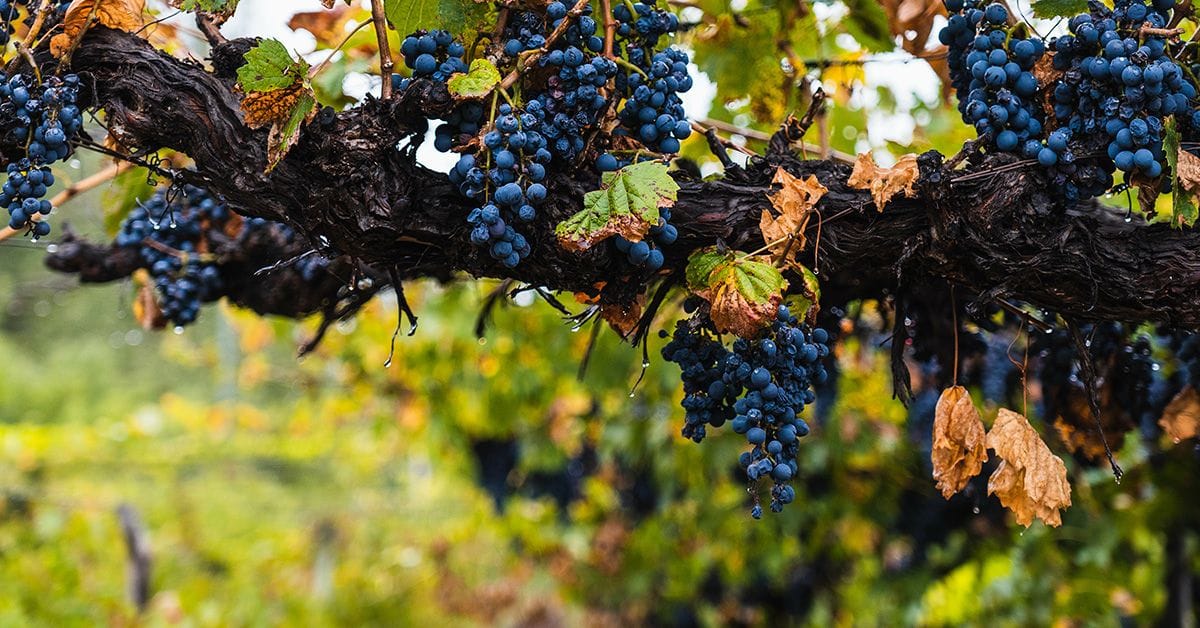Wildfires are a growing global concern, causing severe destruction and long-lasting smoke taint on crops. Now, new research describes a way to reduce smoke taint and improve palatability of wildfire-affected wines using molecularly imprinted polymers.

Wildfires are a natural phenomenon, but their scale and frequency continues to grow. Extreme wildfires are forecast to increase 14% by 2030 and 30% by 2050. And in 2021 alone, there were 19 large wildfire disasters worldwide—the third-highest figure recorded this century.1 Multiple studies have found that human activity and resulting climate change is a primary contributor to increases in the season length, frequency, and burned area of wildfires,2,3 and this is predicted to worsen over time.
Beyond the destruction and loss of life, wildfires also have a huge economic burden, with smoke damage to crops causing a long-lasting impact for producers in neighboring regions. In addition to the initial damage caused by the fire itself, wildfires can leave a persistent taint on crops as they absorb volatile compounds from the ash and smoke. One outcome can be an unpleasant flavor and smell in wine made from exposed grapes, with some compounds waiting until after fermentation or aging to launch their unpalatable smoky effects. This is because some taints act as precursors—for example to free guaiacol, which is not distinguishable in the grape, but contributes to the intensity of smoke taint characters post-fermentation.4 In addition to guaiacol, smoke contains a variety of other volatile phenols, including cresols, methylguaiacol, vinylguaiacol, syringol, methylsyringol, and vinylsyringol—and it is these and their glycocongugates that may contribute to the overall effect.5 Producers use a variety of adsorbents such as commercially available activated carbons to remove these compounds, but these can also remove desirable constituents that contribute to the beverage’s characteristic color, bouquet, and flavor.6
Now, a new study reported in the Journal of Agricultural and Food Chemistry describes a way to reduce this smoke taint and improve palatability.7 To achieve this, researchers from Australia and New Zealand used molecularly imprinted polymers—synthetic materials that are tailor-made to bind selectively to one or more target compound—in hopes that the polymers could remove smoky substances without affecting other characteristics. The team added polymer beads, either in mesh bags or floating freely in the liquid, and used chemical analysis and taste-testing to evaluate the results. When added to smoke-tainted pinot noir for 24 hours, the polymers were able to eradicate up to 57% of guaiacol, 4-methylguaiacol, cresols, and phenol. However, the authors observed that less than 10% of volatile phenol glycoconjugates were removed, and there was some loss of the wine’s original color. In terms of timing, addition of the polymers after yeast inoculation yielded the best outcomes, both in terms of volatile phenol removal and wine sensory profiles.

Amelioration of Smoke Taint in Wine via Addition of Molecularly Imprinted Polymers during or after Fermentation
DOI: 10.1021/acs.jafc.4c03912
Despite some impact on other aroma volatiles and red wine color, the findings demonstrate that molecularly imprinted polymers can ameliorate smoke-tainted wine. Other groups have also had success with polymers: a 2018 study reports on using a putative imprinted magnetic polymer both before and after fermentation to remove peppery odorants in Cabernet Sauvignon.8 Chemical and sensory analyses showed that the polymer treatments were more effective than commercially available polylactic acid films for removing the unwanted aromas without negatively impacting the overall profile.
There are many other flavor properties of wine that can be tinkered with chemically. Previous research has explored the use of supplements such as maceration enzyme, enotannins, and mannoproteins to modify certain compositional and sensory properties to mimick a wine made from riper grapes.9 With some producers choosing to harvest grapes earlier at the sign of a local wildfire, approaches such as these might become commonplace for an industry that requires large tracts of land in traditionally hot and dry landscapes.
References
- Alves, B. Wildfires - statistics & facts. Statista.com, 2024.
- Ostoja, S.M. et al. Focus on western wildfires In: Fifth National Climate Assessment. U.S. Global Change Research Program, 2023.
- Westerling, A.L. Increasing western US forest wildfire activity: Sensitivity to changes in the timing of spring. Phil. Trans. R. Soc. B 2016, 371: 20150178.
- Hayasaka, Y. et al. Glycosylation of Smoke-Derived Volatile Phenols in Grapes as a Consequence of Grapevine Exposure to Bushfire Smoke. J. Agric. Food Chem. 2010, 58, 20, 10989–10998
- Parker, M. et al. Contribution of Several Volatile Phenols and Their Glycoconjugates to Smoke-Related Sensory Properties of Red Wine. J. Agric. Food Chem. 2012, 60, 10, 2629–263.
- Culbert, J.A. et al. Compositional Changes in Smoke-Affected Grape Juice as a Consequence of Activated Carbon Treatment and the Impact on Phenolic Compounds and Smoke Flavor in Wine. J. Agric. Food Chem. 2021, 69, 35, 10246–10259.
- Huo, Y. et al. Amelioration of Smoke Taint in Wine via Addition of Molecularly Imprinted Polymers during or after Fermentation. J. Agric. Food Chem. 2024, 72, 32, 18121–18131.
- Liang, C. et al. Chemical and Sensory Evaluation of Magnetic Polymers as a Remedial Treatment for Elevated Concentrations of 3-Isobutyl-2-methoxypyrazine in Cabernet Sauvignon Grape Must and Wine. J. Agric. Food Chem. 2018, 66, 27, 7121–7130.
- Li, S. et al. Use of Winemaking Supplements To Modify the Composition and Sensory Properties of Shiraz Wine. J. Agric. Food Chem. 2017, 65, 7, 1353–1364.
